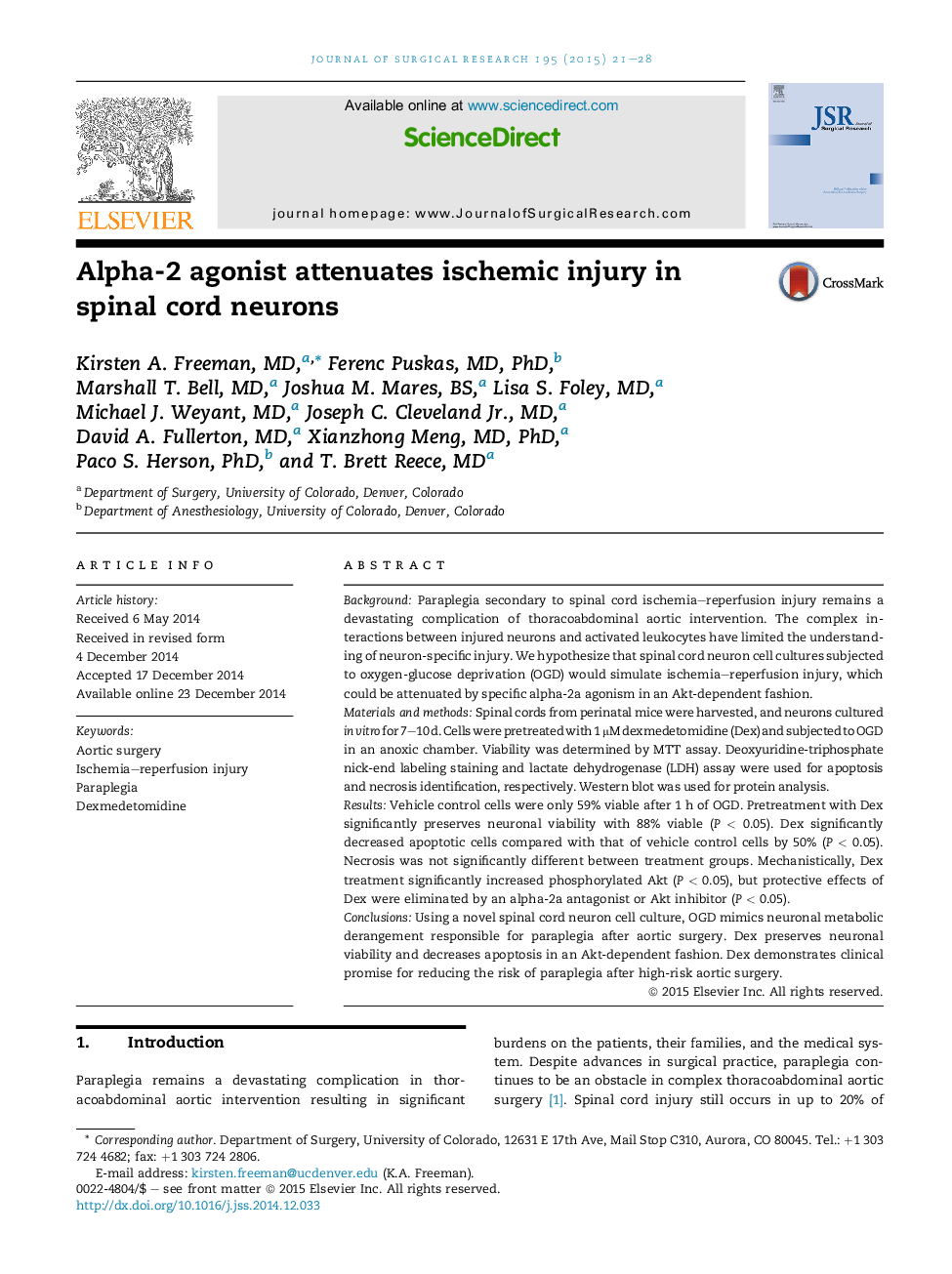| Article ID | Journal | Published Year | Pages | File Type |
|---|---|---|---|---|
| 4299867 | Journal of Surgical Research | 2015 | 8 Pages |
BackgroundParaplegia secondary to spinal cord ischemia–reperfusion injury remains a devastating complication of thoracoabdominal aortic intervention. The complex interactions between injured neurons and activated leukocytes have limited the understanding of neuron-specific injury. We hypothesize that spinal cord neuron cell cultures subjected to oxygen-glucose deprivation (OGD) would simulate ischemia–reperfusion injury, which could be attenuated by specific alpha-2a agonism in an Akt-dependent fashion.Materials and methodsSpinal cords from perinatal mice were harvested, and neurons cultured in vitro for 7–10 d. Cells were pretreated with 1 μM dexmedetomidine (Dex) and subjected to OGD in an anoxic chamber. Viability was determined by MTT assay. Deoxyuridine-triphosphate nick-end labeling staining and lactate dehydrogenase (LDH) assay were used for apoptosis and necrosis identification, respectively. Western blot was used for protein analysis.ResultsVehicle control cells were only 59% viable after 1 h of OGD. Pretreatment with Dex significantly preserves neuronal viability with 88% viable (P < 0.05). Dex significantly decreased apoptotic cells compared with that of vehicle control cells by 50% (P < 0.05). Necrosis was not significantly different between treatment groups. Mechanistically, Dex treatment significantly increased phosphorylated Akt (P < 0.05), but protective effects of Dex were eliminated by an alpha-2a antagonist or Akt inhibitor (P < 0.05).ConclusionsUsing a novel spinal cord neuron cell culture, OGD mimics neuronal metabolic derangement responsible for paraplegia after aortic surgery. Dex preserves neuronal viability and decreases apoptosis in an Akt-dependent fashion. Dex demonstrates clinical promise for reducing the risk of paraplegia after high-risk aortic surgery.
